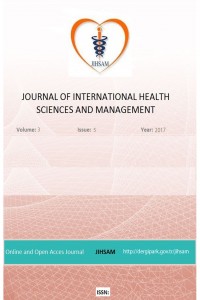Opening of Spiritual Support Units in Hospitals and Investigation of the Issue According to Islamic Law
Abstract
The spiritual
education which seems to be heavy and tough, but which is beneficial to the
person in hand, gives the person consciousness and peace. Performing spiritual
therapy, giving morale to patients and their relatives, contr ibuting to religious education,
chatting with them and answering their questions, meeting religious needs,
facilitating prayer and worship, and such similar methods and practices have
undoubtedly taken its place from the earliest works of art in Islamic sources. We
find the first examples of this service among behaviors of the Prophet Muhammad
(Peace be upon him). This issue applied in a frame of interviewing sessions
with patients and their relatives that are special field of expertise and
practiced in European countries. It is known that this practice has been tried
especially in a few hospitals selected from certain regions in our country and
that some new methods and regulations are required to be passed on. The
material investments to be made by the official institutions, especially in the
fields of health and theology, will eventually return to the people and the
social life in a positive way.
These
services, of course can be fulfilled with a faithful, loyal and devoted imam
who is always well-educated, equipped with professional and pedagogical
formation, full of human love with ethical concerns, principled, respectful,
who knows how to listen to the other person. Service groups such as spiritual
therapist, social theologian and religious officer can be contacted from the
responsible personnel. Although this is a religious duty for those who will be
able to attend this duty, it is evaluated that those who will be provided such
services should be treated as a human right. To seek healing and to preserve
health is the basic principle in Islamic religion. For this reason, investment
has always been encouraged for mankind. As stated in the Qur’an, “if any one
saved a life, it would be as if he saved the life of the whole people”.
References
- ...
Details
| Journal Section | Orginal Research |
|---|---|
| Authors | |
| Publication Date | October 31, 2017 |
| Published in Issue | Year 2017 Volume: 3 Issue: 5 |


